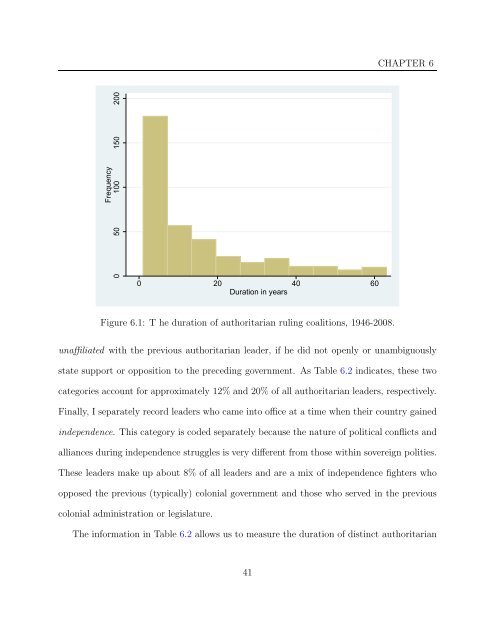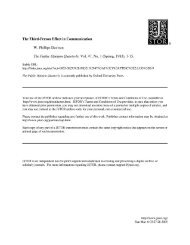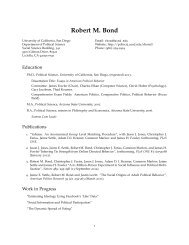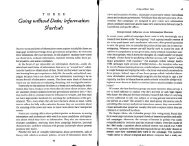Chapter 6 Why Authoritarian Parties? The Regime Party as an ...
Chapter 6 Why Authoritarian Parties? The Regime Party as an ...
Chapter 6 Why Authoritarian Parties? The Regime Party as an ...
Create successful ePaper yourself
Turn your PDF publications into a flip-book with our unique Google optimized e-Paper software.
Frequency<br />
0 50 100 150 200<br />
0 20 40 60<br />
Duration in years<br />
Figure 6.1: T he duration of authoritari<strong>an</strong> ruling coalitions, 1946-2008.<br />
CHAPTER 6<br />
unaffiliated with the previous authoritari<strong>an</strong> leader, if he did not openly or unambiguously<br />
state support or opposition to the preceding government. As Table 6.2 indicates, these two<br />
categories account for approximately 12% <strong>an</strong>d 20% of all authoritari<strong>an</strong> leaders, respectively.<br />
Finally, I separately record leaders who came into office at a time when their country gained<br />
independence. This category is coded separately because the nature of political conflicts <strong>an</strong>d<br />
alli<strong>an</strong>ces during independence struggles is very different from those within sovereign polities.<br />
<strong>The</strong>se leaders make up about 8% of all leaders <strong>an</strong>d are a mix of independence fighters who<br />
opposed the previous (typically) colonial government <strong>an</strong>d those who served in the previous<br />
colonial administration or legislature.<br />
<strong>The</strong> information in Table 6.2 allows us to me<strong>as</strong>ure the duration of distinct authoritari<strong>an</strong><br />
41











